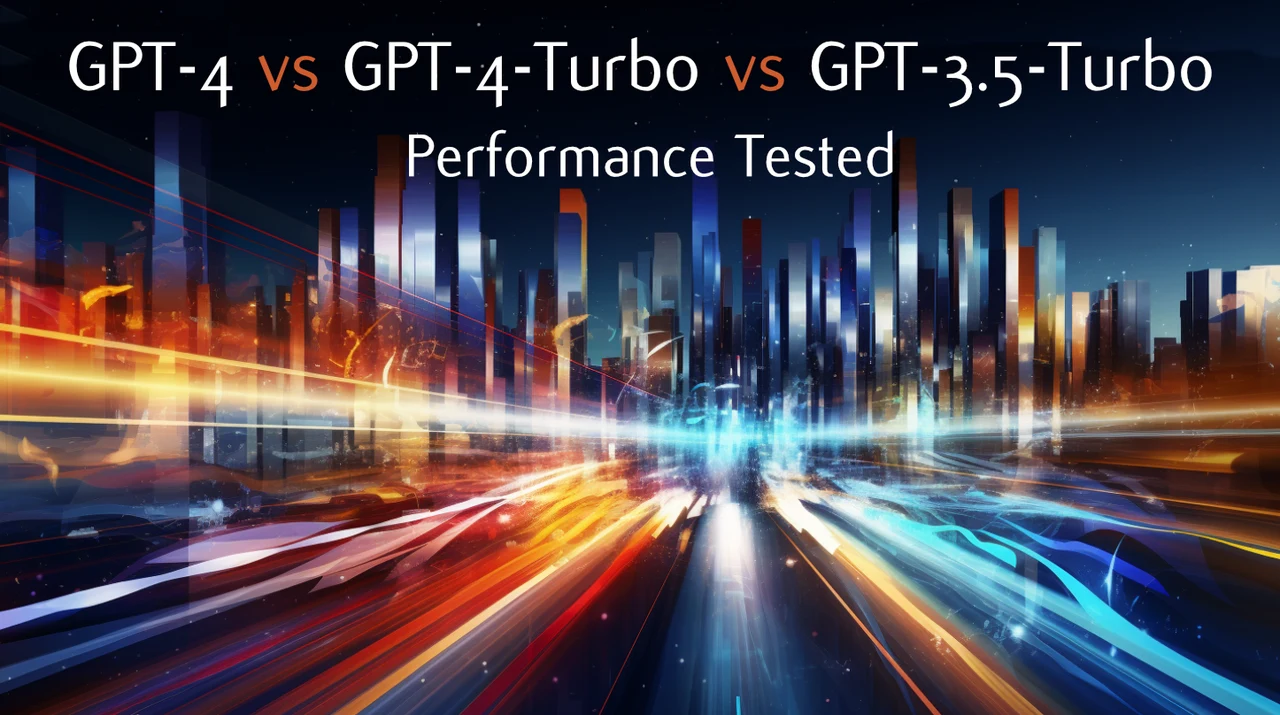
Picking the right OpenAI language model for your project can be crucial when it comes to performance, costs and implementation. OpenAI’s suite, which includes the likes of GPT-3.5, GPT-4, and their respective Turbo versions, offers a spectrum of capabilities that can greatly affect the outcome of your application and the strain on your budget. This GPT-4 vs GPT-4-Turbo vs GPT-3.5-Turbo guide provides an overview of what you can expect from the performance of each and the speeds of response.
The cutting-edge API access provided by OpenAI to its language models, such as the sophisticated GPT-4 and its Turbo variant, comes with the advantage of larger context windows. This feature allows for more complex and nuanced interactions. However, the cost of using these models, which is calculated based on the number of tokens used, can accumulate quickly, making it a significant factor in your project’s financial considerations.
To make a well-informed choice, it’s important to consider the size of the context window and the processing speed of the models. The Turbo models, in particular, are designed for rapid processing, which is crucial for applications where time is of the essence.
GPT-4 vs GPT-4-Turbo vs GPT-3.5-Turbo
When you conduct a comparative analysis, you’ll observe differences in response times and output sizes between the models. For instance, a smaller output size can lead to improved response times, which might make GPT-3.5 Turbo a more attractive option for applications that prioritize speed.
Evaluating models based on their response rate, or words per second, provides insight into how quickly they can generate text. This is particularly important for applications that need instant text generation.
The rate at which tokens are consumed during interactions is another key factor to keep in mind. More advanced models, while offering superior capabilities, tend to use up more tokens with each interaction, potentially leading to increased costs. For example, the advanced features of GPT-4 come with a higher token price tag than those of GPT-3.5.
Testing the models is an essential step to accurately assess their performance. By using tools such as Python and the Lang chain library, you can benchmark the models to determine their response times and the size of their outputs. It’s important to remember that these metrics can be affected by external factors, such as server performance and network latency.
Quick overview of the different AI models from OpenAI
GPT-4
- Model Size: Larger than GPT-3.5, offering more advanced capabilities in terms of understanding and generating human-like text.
- Capabilities: Enhanced understanding of nuanced text, more accurate and contextually aware responses.
- Performance: Generally more reliable in producing coherent and contextually relevant text across a wide range of topics.
- Use Cases: Ideal for complex tasks requiring in-depth responses, detailed explanations, and creative content generation.
- Response Time: Potentially slower due to the larger model size and complexity.
- Resource Intensity: Higher computational requirements due to its size and complexity.
GPT-4-Turbo
- Model Size: Based on GPT-4, but optimized for faster response times.
- Capabilities: Retains most of the advanced capabilities of GPT-4 but is optimized for speed and efficiency.
- Performance: Offers a balance between the advanced capabilities of GPT-4 and the need for quicker responses.
- Use Cases: Suitable for applications where response time is critical, such as chatbots, interactive applications, and real-time assistance.
- Response Time: Faster than standard GPT-4, optimized for quick interactions.
- Resource Intensity: Lower than GPT-4, due to optimizations for efficiency.
GPT-3.5-Turbo
- Model Size: Based on GPT-3.5, smaller than GPT-4, optimized for speed.
- Capabilities: Good understanding and generation of human-like text, but less nuanced compared to GPT-4.
- Performance: Efficient in providing coherent and relevant responses, but may not handle highly complex or nuanced queries as well as GPT-4.
- Use Cases: Ideal for applications requiring fast responses but not the full depth of GPT-4’s capabilities, like standard customer service chatbots.
- Response Time: Fastest among the three, prioritizing speed.
- Resource Intensity: Least resource-intensive, due to smaller model size and focus on speed.
Common Features
- Multimodal Capabilities: All versions can process and generate text-based responses, but their capabilities in handling multimodal inputs and outputs may vary.
- Customizability: All can be fine-tuned or adapted to specific tasks or domains, with varying degrees of complexity and effectiveness.
- Scalability: Each version can be scaled for different applications, though the cost and efficiency will vary based on the model’s size and complexity.
- API Access: Accessible via OpenAI’s API, with differences in API call structure and cost-efficiency based on the model.
Summary
- GPT-4 offers the most advanced capabilities but at the cost of response time and resource intensity.
- GPT-4-Turbo balances advanced capabilities with faster response times, suitable for interactive applications.
- GPT-3.5-Turbo prioritizes speed and efficiency, making it ideal for applications where quick, reliable responses are needed but with less complexity than GPT-4.
Choosing the right model involves finding a balance between the need for speed, cost-efficiency, and the quality of the output. If your application requires quick responses and you’re mindful of costs, GPT-3.5 Turbo could be the best fit. On the other hand, for more complex tasks that require a broader context, investing in GPT-4 or its Turbo version might be the right move. Through careful assessment of your application’s requirements and by testing each model’s performance, you can select a solution that strikes the right balance between speed, cost, and the ability to handle advanced functionalities.
Here are some other articles you may find of interest on the subject of ChatGPT
Filed Under: Guides, Top News
Latest timeswonderful Deals
Disclosure: Some of our articles include affiliate links. If you buy something through one of these links, timeswonderful may earn an affiliate commission. Learn about our Disclosure Policy.



